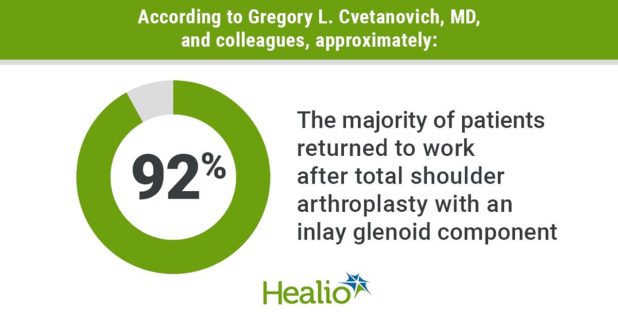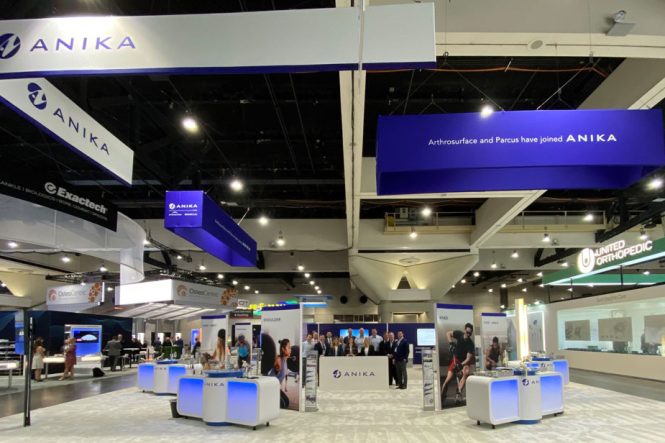According to a new study, the rate of return to work for patients who receive the Arthrosurface OVO with Inlay Glenoid is 92.6%, with 76% of patients making a full recovery back to preoperative occupational demand levels. Featured in Healio Orthopedics, Dr. Gregory Nicholson explains why this is a good option for patients who want to remain active. Continue reading to learn more
Anatomic total shoulder arthroplasty with an inlay glenoid component and a stemless, ovoid humeral head led to a high rate of return to occupational and sporting activities and improved clinical outcomes, according to published results.
Gregory P. Nicholson, MD an associate professor in the department of orthopedic surgery at Rush University Medical Center, and colleagues analyzed information for 27 shoulders in a retrospective review of total shoulder arthroplasty (TSA) with an inlay glenoid component, specifically in young, active patients with a minimum 2-year follow-up.
“We know that traditional TSA in younger patients – just like hip and knee replacement – has a higher, earlier failure rate,” Nicholson told Healio Orthopedics. “This younger, active population is typically still in the workforce and has higher recreational activity levels that they don’t want to give up.”

“The system is bone sparing, has numerous biomechanical advantages, and the ‚Äòsymbiotic’ relationship between the inlay glenoid component and the subchondral surface bone provides excellent pain relief, range of motion, and return to work and recreational activity,” Nicholson added.
The results showed significant improvements in patient-reported outcome measures and range of motion with no reoperations, according to the study abstract. The rate of return to work was 92.6%, with 76% of patients making a full recovery back to preoperative occupational demand levels.
“I think [the results] will stimulate more investigation on the kinematics of these types of TSA procedures with inlay glenoid components and the potential advantage of an aspherical humeral head shape,” Nicholson said. “There is another option to traditional stemmed TSA that can provide consistent pain relief, functional return and allow a higher activity level. This can allow patients of all walks of life to maintain a livelihood they may not have been able to continue with otherwise,” he added.
PERSPECTIVE

Brandon J. Erickson, MD
Cvetanovich and colleagues’ study regarding outcomes following shoulder arthroplasty with inlay glenoid components in 27 shoulders is timely given the recent increase in shoulder arthroplasty procedures, especially in younger patients. At a minimum 2-year follow-up, the authors reported significant improvements in range of motion and clinical outcome scores with no reoperations or radiographic evidence of component loosening. As life expectancy continues to increase, patients will need more and more longevity out of shoulder arthroplasty components. The inlay component design may be such that it avoids the feared “rocking horse” phenomenon which onlay components are subject to. However, while these results are encouraging, they are in the very short term. While long-term results of onlay components are available, it is unclear how inlay components will perform at 5 to 10 years. Longer follow-up is critical to understand if inlay components afford lower revision rates compared to onlay components.
This article was originally featured in Healio Orthopedics




